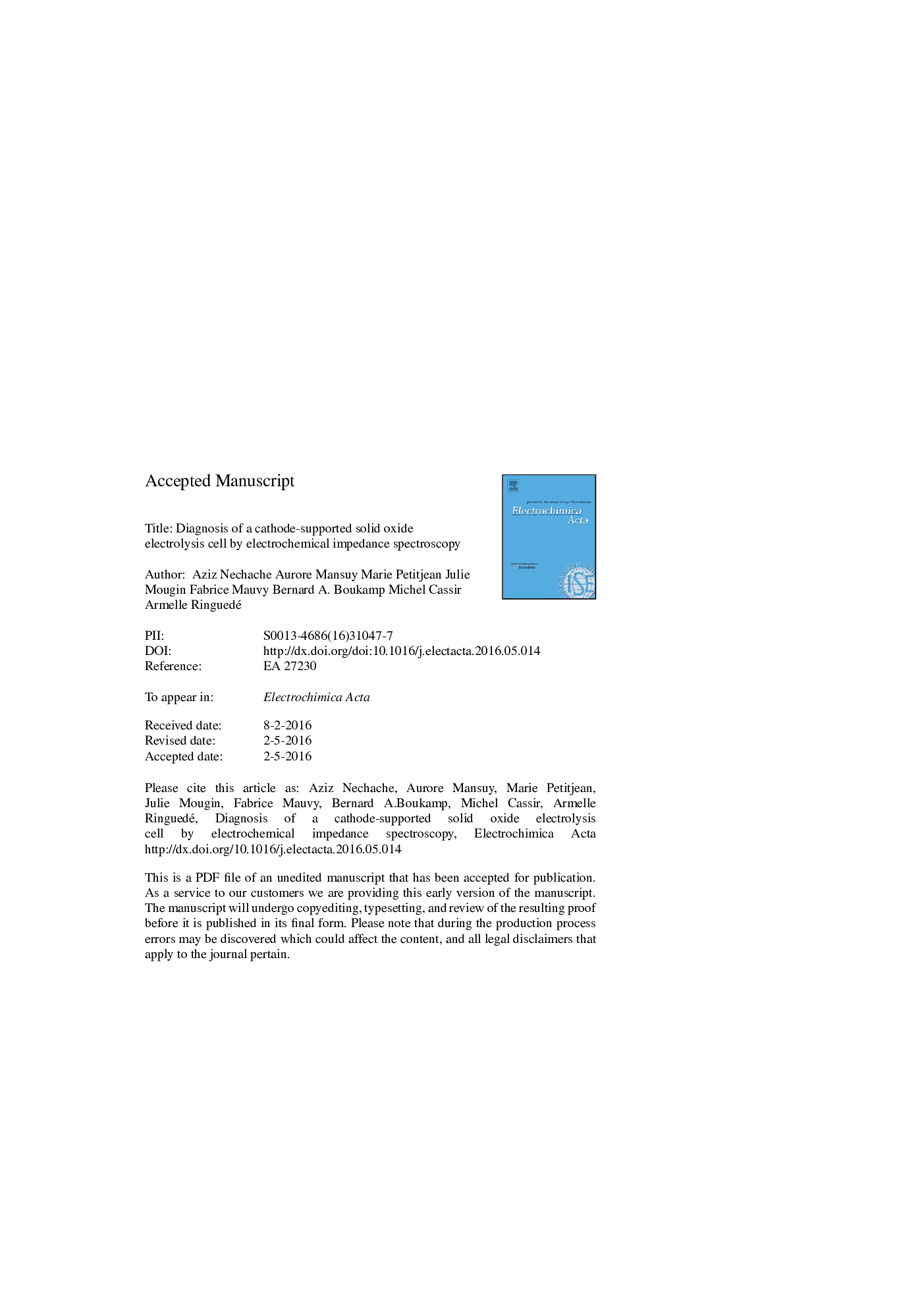| Article ID | Journal | Published Year | Pages | File Type |
|---|---|---|---|---|
| 6606996 | Electrochimica Acta | 2016 | 42 Pages |
Abstract
High-temperature electrolysis (HTSE) is a quite recent topic where most of the studies are focused on performance measurements and degradation observations, mainly achieved by polarization curve. However, it mainly leads to the overall cell behaviour. To get more specific knowledge on the operation of the cell, Electrochemical Impedance Spectroscopy (EIS) is more appropriate. In this study, EIS and chronopotentiometry were combined in order to characterize the electrochemical performance and behaviour of a commercial electrode-supported cell of Ni-YSZ/YSZ/LSCF type. A two-electrode configuration was used while a three-electrode one is required to better separate each component behavior. Nevertheless, it allows applying EIS to any single cell mainly when no good location for a reference electrode is available. Experimental parameters such as current density, temperature or PH2O/PH2 ratio were analysed. Using electrical equivalent circuit (EEC) combined to the distribution of relaxation time (DRT) and the analysis of the difference in impedance spectra (ADIS) approaches allowed deconvoluting impedance diagrams into three or four arcs characterized by their specific capacitance and relaxation frequency. Each arc was ascribed to a phenomenon related to the electrochemical reactions. This work corresponds to an in situ diagnosis by EIS of solid oxide electrolyser cell reaction mechanisms.
Keywords
Related Topics
Physical Sciences and Engineering
Chemical Engineering
Chemical Engineering (General)
Authors
Aziz Nechache, Aurore Mansuy, Marie Petitjean, Julie Mougin, Fabrice Mauvy, Bernard A. Boukamp, Michel Cassir, Armelle Ringuedé,
